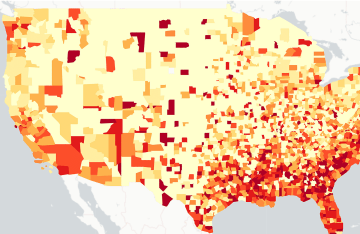How are Adolescents Affected by What They Watch on TV?
The study explores how sex, drugs, and violence on TV impact teenagers and their choices.

Photo Credit: Gustavo Ferreira / Unsplash
We all know adolescence is a formative time, and that it’s all but impossible to shield tweens and teens from the standard American media diet dappled with sex, drugs, and violence. But what effect do those shows and movies actually have on our children?
It is a question very much on the minds of Senior Research Scientist Amy Bleakley, Ph.D., M.P.H., and Postdoctoral Fellow Morgan Ellithorpe, Ph.D., of the Annenberg School for Communication. They are in the midst of a year-long longitudinal study of 2,000 American teenagers, looking not only at what the teens are watching, but how the content of those shows shapes the teens’ behavior.

In the absence of life experience, says Bleakley, teenagers often learn from TV and movies as they’re navigating uncharted waters like gender roles or how to behave in relationships.
“These are situations where adolescents often turn to their peers, and many studies have shown that media and peers seem to have a similar effect when it comes to youth behavior,” says Bleakley. “And often for things like sex, discussions about contraception or unwanted pregnancy aren’t depicted. Teenagers see characters having a good time without any negative consequences.”
Throughout the year, Bleakley and Ellithorpe are collecting and analyzing survey data to look at exposure to risky health behavior (i.e., violence and sex), diversity in media choices, and how the media affects some groups differently than others.
In January, they published a content analysis study in the Journal of Youth and Adolescence looking at the representation of gender and race among characters in shows popular with 14- to 17-year-olds. The paper also characterized difference in TV-viewing preferences across racial and gender groups.
The study finds evidence that adolescents watch TV shows with characters that are similar to themselves, perhaps because these characters help teenagers build their identity.
In looking at diversity in mainstream shows, females were significantly underrepresented. However the researchers did find that female adolescents were more likely to watch shows with greater female representation. In essence, young women like to watch shows with more women in them.
The proportion of Black characters in the top shows actually was proportional to Blacks’ makeup in the general population (13%), though Bleakley and Ellithorpe suspect that the types of Black characters portrayed is still limited.
The researchers payed close attention to what Black adolescents were watching, both because past research has shown — and this study also suggests — that they watch two-and-a-half times as much television as White adolescents.
One of the more intriguing findings was that while the top 100 shows for each group are largely similar — shows like Empire, Big Bang Theory, and Modern Family — Black adolescents watch many more shows in addition, and these shows on average include a higher percentage of Black characters.
“Once you take into account that African American adolescents are watching a lot more content overall, suddenly there's this increase in the number of Black characters they’re exposed to,” says Ellithorpe. “So part of the hypothesis is that they may be watching more media in part to include both mainstream and more Black-oriented content.”
Perhaps, Bleakley muses, media effects seem weaker in Black adolescents because researchers have been looking at only the most popular shows, which include fewer Black characters.
In future analyses, Bleakley and Ellithorpe are looking at the content of movies as well. Once their data collection from 2,000 teenagers is complete, they will then begin to connect the content of shows with individual-level behavioral data.



